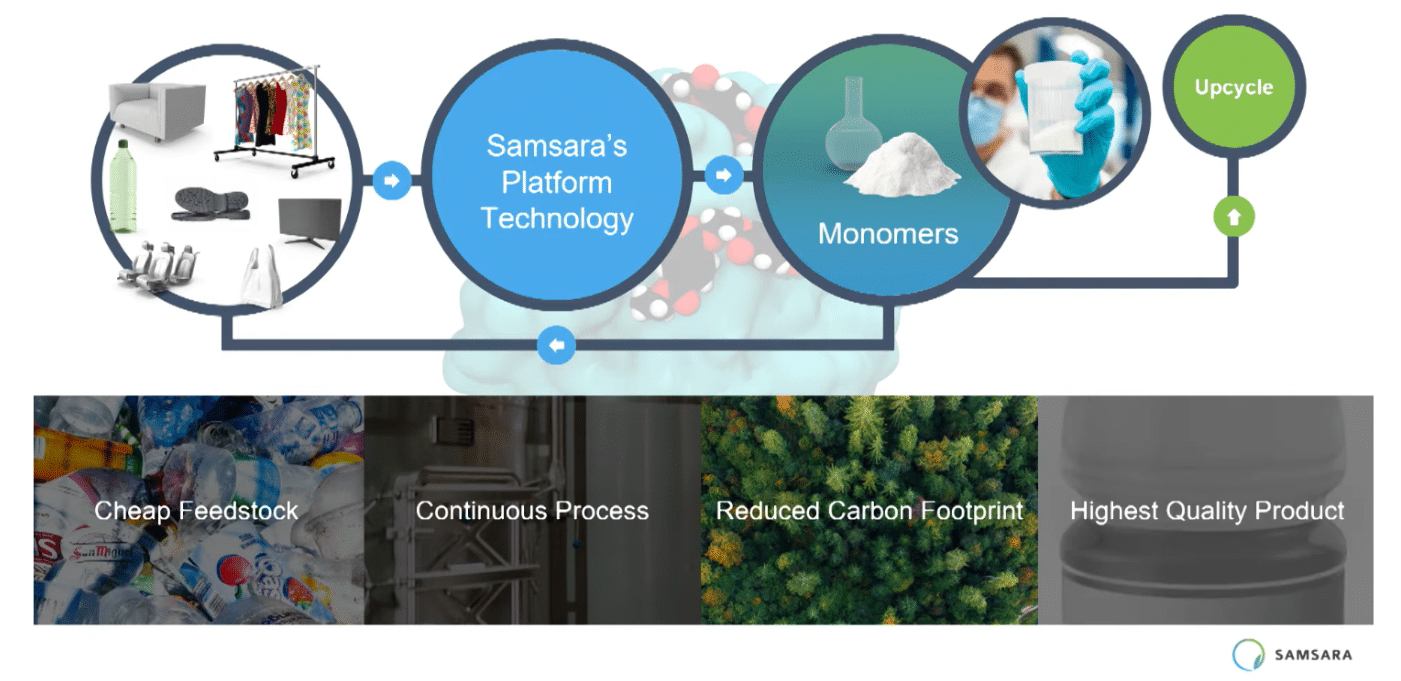Australian environmental technology startup Samsara Eco, in collaboration with athletic apparel giant Lululemon, has unveiled the world’s first enzymatically recycled nylon 6,6 product. Their initiative represents a significant milestone, advancing the fashion industry closer to establishing a circular, sustainable ecosystem.
Launched in 2020, Samsara Eco specializes in infinite recycling to end plastic pollution. They believe that the planet can’t solve the climate crisis without solving the plastics crisis. The company’s patented process that breaks plastic down to its core molecules is carbon-neutral and can re-create brand-new plastic infinitely.
A Step Towards Sustainable Fashion
The fashion industry currently contributes about 10% of annual global carbon emissions, poised to increase by 50% by 2030. Additionally, the industry heavily relies on plastic-derived textiles sourced from petroleum, equivalent to 342 million barrels of petroleum.
Alarmingly, the industry produces 2 million tonnes of textile waste every year, while around 10% of microplastics found in the ocean come from this waste.
However, a small portion of these materials undergo recycling. According to the U.S. Environmental Protection Agency, merely 15% of plastic-derived textiles are recycled.
Nylon 6,6 is one of the most widely used plastics in the textile sector, with nearly 4 million tonnes of it manufactured annually. The material serves as a fundamental fiber in many of Lululemon’s top-selling products, particularly its popular Swiftly Tech long-sleeve top.
Using the recycled nylon 6,6 produced through Samsara Eco’s recycling technology, the clothing giant has developed samples of the said top, marking the world’s first instance of this nylon recycled in such a manner.
Due to its robust, heavy-duty properties, nylon 6,6 has traditionally posed challenges for recycling. Yet, it has found applications across various industries, including fashion, automotive, and electronics.
But with Samsara Eco’s pioneering technology (patent pending), nylon 6,6 can now be recovered and extracted from end-of-life textiles. This offers the potential to create a fully circular ecosystem for the apparel industry.
Enzymatic Recycling: Revolutionizing the Textile Industry
Currently, fashion companies like Lululemon have two primary methods for recycling textiles: mechanical and chemical processes involving solvents. However, both approaches pose challenges. Mechanical recycling limits the number of times recovered plastics can be recycled, while chemical methods often consume excessive energy.
Samsara Eco, which secured a $56 million Series A in 2022, addresses both of those concerns through its innovative enzymatic infinite textile recycling. The Australian startup’s manufacturing process operates swiftly and at low temperatures, producing a more sustainable recycled and new product.
Paul Riley, the company’s CEO and Founder, highlighted their commitment to keeping a low carbon footprint during their recycling process. Riley also noted that their enzymatic recycling process reduces emissions and can save millions of tonnes of carbon compared to producing virgin nylon 6,6. He further said that:
“We’ve started with nylon 6,6, but this sets the trajectory of what’s possible for recycling across a range of industries as we continue expanding our library of plastic-eating enzymes. This is one giant leap for the future of sustainable fashion and circularity.”
The company employs enzymes capable of targeting complex plastics, known as polymers, and converting them back to their original chemical composition, referred to as monomers. This unique capability is what renders the startup’s recycling technology infinite.
Here’s how the recycling process looks like and its major benefits:

In June 2023, Samsara Eco unveiled its partnership with Lululemon as its inaugural textile collaborator. The Swiftly recycled nylon marks the subsequent phase of their collaboration, fostering lower-impact alternative textiles within the apparel industry.
Collaboration and Innovation in Sustainability
For decades, scientists have dedicated extensive research efforts to discovering the most cost-effective methods for breaking down plastics, with a particular focus on polyethylene terephthalate (PET). Through collaborative initiatives and the integration of artificial intelligence (AI), practical applications of plastic-eating enzymes have been accelerated.
Other startups are also innovating in the field to help address the plastic crisis. For instance, Circ has pioneered a distinctive hydrothermal processing technology tailored for recycling blended textiles, such as polyester-cotton blends. The Circ system utilizes hot water, pressure, and chemical solvents to recycle both materials.
These innovative ventures may qualify for plastic credits or carbon credits. Each plastic credit represents the diversion or recycling of one ton of plastic waste that would otherwise have been left uncollected or unrecycled.
By incorporating plastic credits alongside carbon credits, companies can effectively address their sustainability objectives. Many organizations view reducing plastic waste as an integral component of their broader commitments to achieving net-zero emissions.
The partnership between Lululemon and Samsara Eco goes beyond mere material innovation. They embody the exciting potential and influence that can be realized through collaboration and inter-industry partnerships. This breakthrough not only heralds a pivotal moment for sustainable innovation in apparel but also for all sectors aiming to transition towards more circular models.

